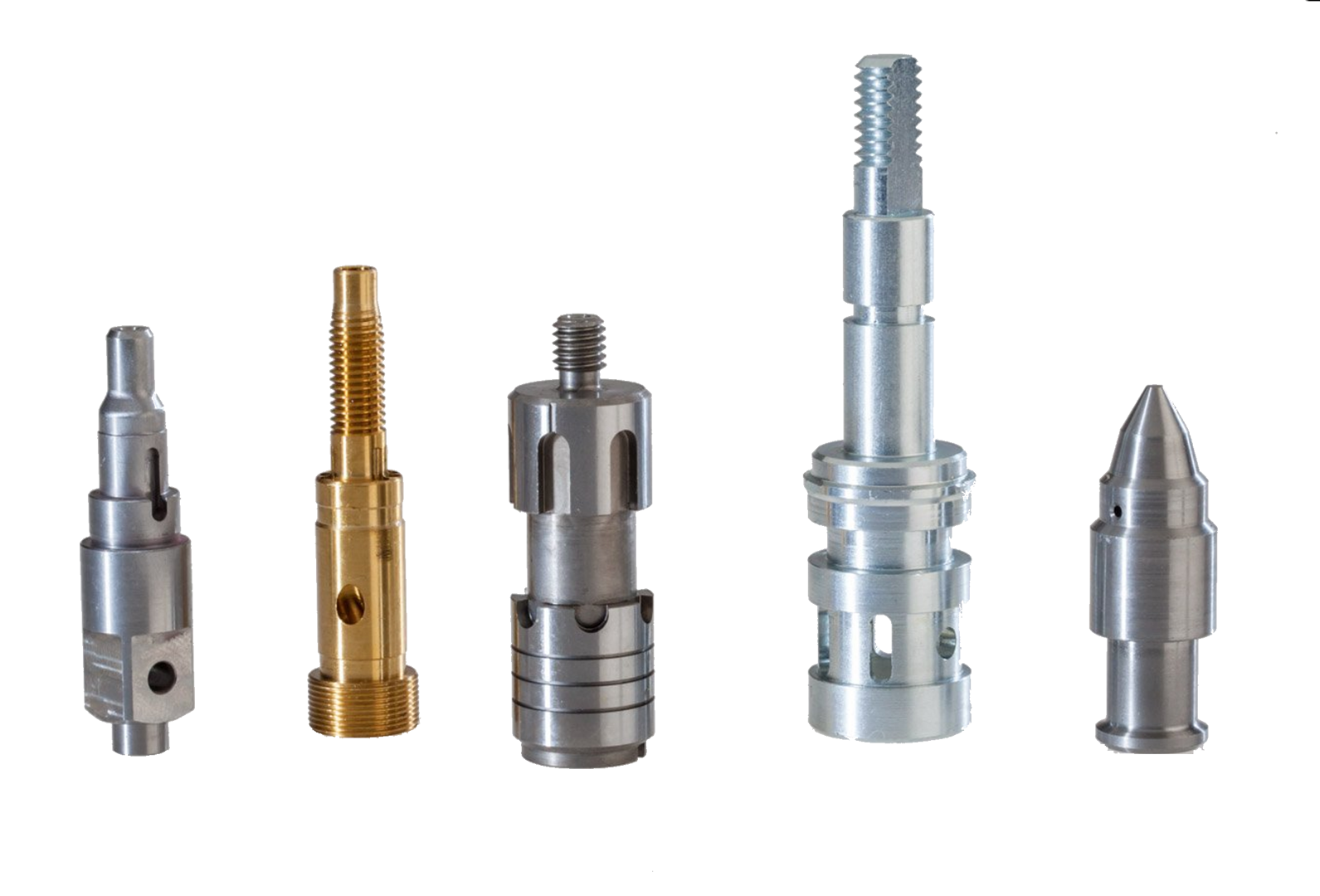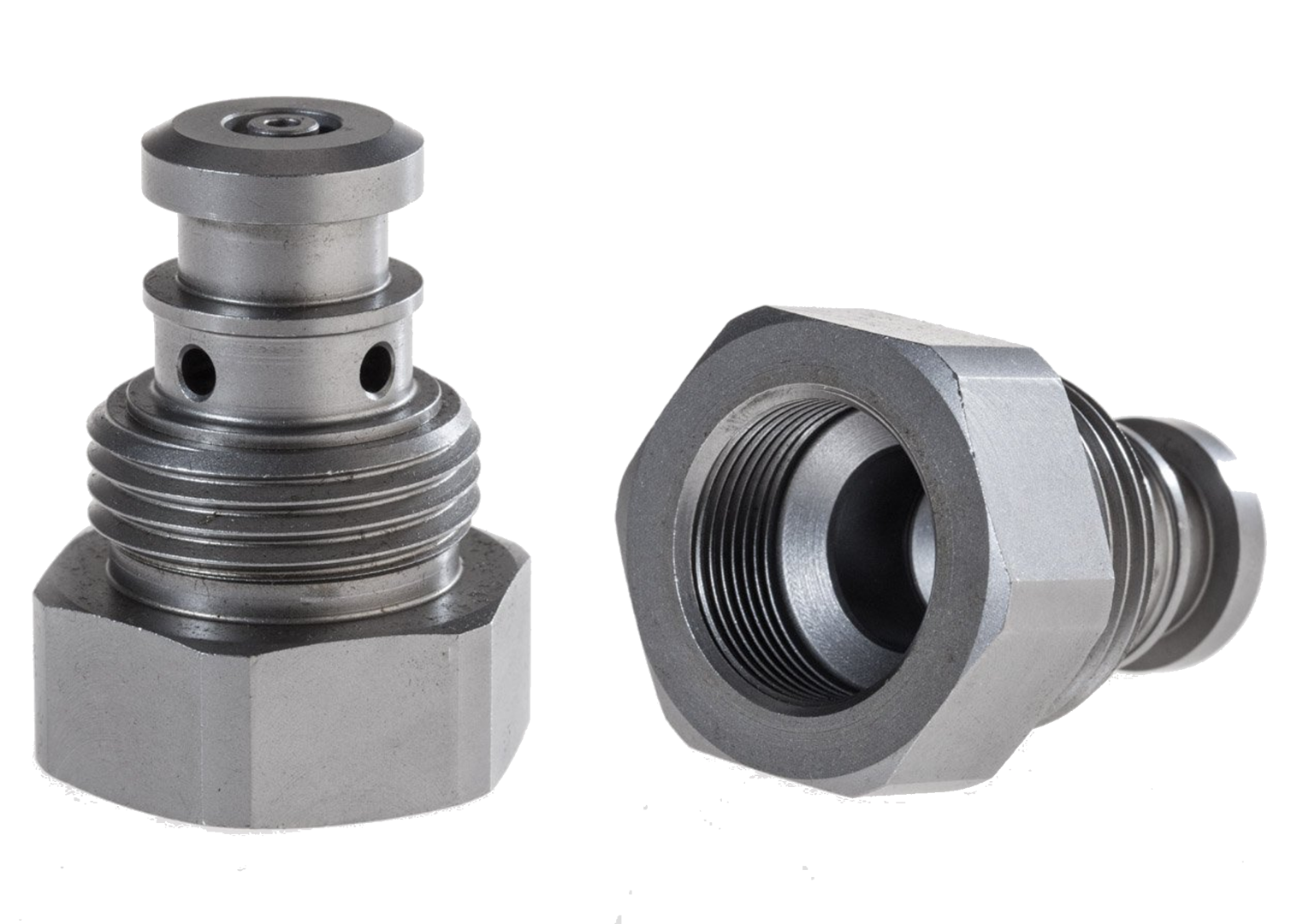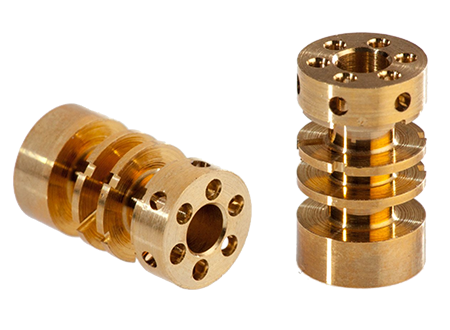Industries Served
Hydraulics and Pneumatics

Pneumatic and hydraulic power systems are similar yet different.
Both use a fluid (either a gas or liquid) to channel mechanical energy, and both require a type of pump, as well as valves for force and velocity control. But the two systems also have significant differences.
How Do Pneumatic Systems Work?
 Pneumatic systems use compressed gas (usually, air or nitrogen) to control and transmit energy. They utilize a variety of filters, valves, and regulators to treat, direct, and control the gas as it moves from the compressor to the actuating cylinder.
Pneumatic systems use compressed gas (usually, air or nitrogen) to control and transmit energy. They utilize a variety of filters, valves, and regulators to treat, direct, and control the gas as it moves from the compressor to the actuating cylinder.
Because these systems rely on dry gas as their source, they require lubrication. Many pneumatic systems use a filter/regulator/lubricator (FRL) combination to clean and lubricate the gas, as well as control the pressure.
The actuation of the controls within the system can be manual, pneumatic, or electrical. Pneumatic actuators produce precise linear motion – accuracy within 0.1 inches and repeatability within .001 inches.
Pneumatic Applications
Pneumatics are used in a wide range of applications. Because they generate a rapid movement of cylinders and are available in tiny sizes, they’re well-suited for applications that require quick actions with relatively low force.
Pneumatic circuits are used in automatic production lines, train doors, mechanical clamps, and dental drills. They’re spotless systems (relying on air or nitrogen gas as their primary source), and therefore suitable for both the food and pharmaceutical industries.
Also, medical device manufacturers increasingly rely on pneumatics as the demand for smaller, lighter devices requires valves that offer more flow at lower power (such as battery power). Oxygen concentrators, infusion pumps, ventilators, and anesthesia devices all use some gas to control their functions.
Advantages of Pneumatic Systems
Pneumatic power systems are often preferred because of their simplicity of design and low initial costs. Because their components can be fashioned from relatively inexpensive material, secondary machining costs are reduced.
Pneumatic equipment is also less prone to shock damage, due to the compressibility of the gas. And because compressed gas can be stored, machines can remain operational for a while in the event of an electrical power outage. For systems that rely on compressed air, that resource is available in unlimited supply.
How Do Hydraulic Systems Work?
 Hydraulic systems, on the other hand, use relatively incompressible liquid media to control and transmit power. A hydraulic system utilizes a pump, various types of valves, sealing devices, and an actuating cylinder to circulate liquid repeatedly from a fixed reservoir. The fluid is pumped through the valves and into the cylinder, where the hydraulic energy is converted into mechanical energy.
Hydraulic systems, on the other hand, use relatively incompressible liquid media to control and transmit power. A hydraulic system utilizes a pump, various types of valves, sealing devices, and an actuating cylinder to circulate liquid repeatedly from a fixed reservoir. The fluid is pumped through the valves and into the cylinder, where the hydraulic energy is converted into mechanical energy.
Hydraulics require a fluid storage tank (or accumulator) from which the system can draw whenever necessary. The two most common hydraulic fluids are mineral oil and water, although ethylene glycol and synthetic fluids are also sometimes used.
Hydraulic systems usually have a dedicated power unit for each machine. They are typically bigger and more complex than pneumatic systems. As a result, their maintenance requires a higher skill level.
Hydraulic Applications
Hydraulic systems are commonly used in both the automotive and aerospace industries for braking and steering systems, shock absorbers, wing flaps, and landing gear. Most heavy machinery used in construction – including bulldozers, backhoes, cranes, loaders, and excavators – rely on hydraulics.
In the medical field, hydraulics are used for surgical tables, X-Ray and CT tables, dental chairs, and wheelchair lifts.
Advantages of Hydraulic Systems
Although hydraulic systems have a higher initial cost, they are incredibly efficient, resulting in low operating expenses. They also deliver consistent power output. A well-designed hydraulic circuit will operate with little to no wasted heat energy and will require very little maintenance.
Because they operate at higher pressure -- typically 1500 to 2500 psi – hydraulics generate high force from smaller actuators, resulting in less clutter in the work area.
Are Your Products Pneumatic or Hydraulic?
Do your products move, shape, turn, lift, mold, or haul using either pneumatic or hydraulic systems? Then you can depend on the superior quality of Roberts Swiss parts to deliver a competitive edge. Our unwavering passion for excellence has made Roberts Swiss a supplier of quality components for pneumatic and hydraulic systems of all types for 60 years.
The aeronautic, medical, electronics, and automotive industries trust the production of our components for accuracy and quality. We produce hundreds of parts around the clock, under the most demanding conditions…for a variety of applications that have to work.
